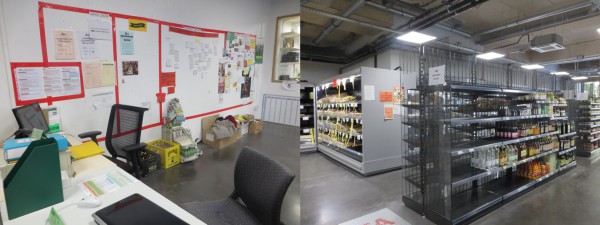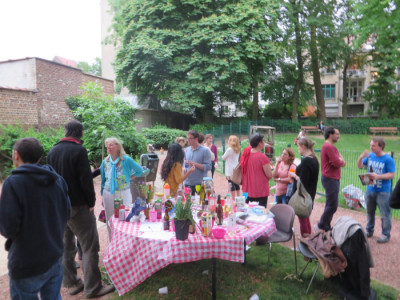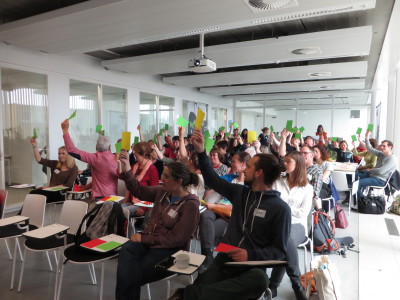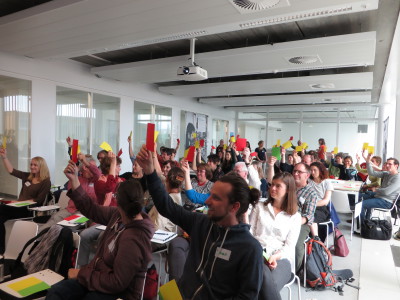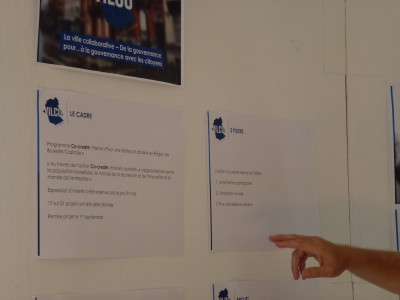
Le projet VILCO s’intéresse aux manières d’améliorer la collaboration entre pouvoirs locaux et collectifs citoyens pour augmenter la résilience des dynamiques locales en faveur de l’environnement. Il est financé pendant trois ans par l’Institut Bruxellois pour la Recherche et l’Innovation, Innoviris[1], dans le cadre de l’action « Co-create » qui depuis 2015 finance des projets de recherche appliquée ou de développement expérimental. L’objectif de « Co-create » est de « soutenir l’innovation via des processus de co-création » (Innoviris 2014)(p.2). Au fur et à mesure des années, Innoviris a changé son approche sur l’apport de la recherche académique dans les projets. En 2015, l’accent était porté sur le concept de « co-création » et la recherche associée aux modalités des Livings Labs : « Cela signifie que la plateforme expérimentale ne doit pas uniquement être un espace/terrain pour réaliser l’étude mais bien un espace de recherche participative en co-création. » (Innoviris 2014)(p.8). En 2016, il inscrivait la recherche participative dans la dimension de « Recherche et Innovation Responsable (RRI) » (Innoviris 2015) (p. 3). En 2017, il se référait à la « Recherche Action Participative » (RAP) (Innoviris 2016) (p.3).
Bien que les premiers projets, Co-create 2015, aient tous été portés par des centres de recherche (académique ou non), des projets du Co-create 2016, dont le projet VILCO, sont portés par des acteurs de terrain.
Continue reading
